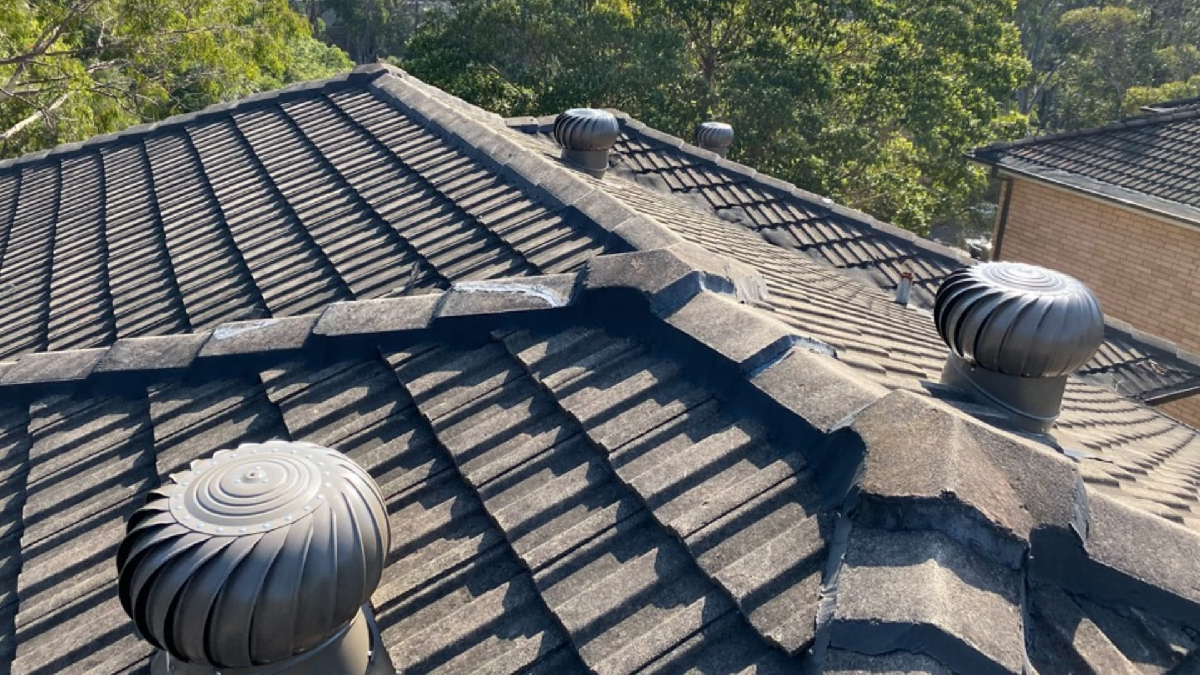Every homeowner works to make his home as energy efficient as possible, and one important aspect of this is roof ventilation. Homeowners pay attention to other aspects of energy efficiency such as insulation, energy efficient windows and doors, but often do not pay enough attention to roof ventilation, an essential tip for maintaining energy efficiency. Ventilation of roofs plays a good role in energy efficiency, not only in eliminating heat but also in circulating air within the home, and helping to prevent overheating and cooling. A well-established roofing company, we at River City Roofing are focused on delivering the best possible quality roofing solution, such as roof ventilation systems to optimize energy efficiency, comfort and roof protection.
In this article, we will discuss how roof ventilation is effective in energy efficient roofs, why a proper attic is important, and how you can make your home ventilation efficient in order to save energy. See, here’s how River City Roofing can help you get an energy efficient roof.
What Is Roof Ventilation?
Roof ventilation is a set of vents and exhausts fixed in the attic or roof space of your house. These vents ventilate your attic, permitting hot, humid air to be discharged and cold, dry air to be drawn in. Effective roof ventilation is important to maintain attic temperature and to prevent the accumulation of heat in summer and cold in winter. It may further contribute to less load on your HVAC system and hence substantial energy consumption.
Roof ventilation allows for air flow between the attic space and the roof openings via roof vents. Properly installed roof vents keep the roof from overheating. They also can let moist air out and cooler, drier air in. If the roof gets too hot or gets filled with moisture, that can result in significant damage to your home’s structure.
Free Roof Inspections. Fast. Reliable.
Is your roof ready to weather the storm? Dont risk property damage. Our free roof inspections provide expert analysis to identify potential issues before they become costly problems.
The Role of Roof Ventilation in Energy-Efficient Roofs
1. Regulating Temperature
In the summer, a poorly ventilated attic can hold in heat, thus stressing your air conditioning system to cool the house. The attic can get temperatures greater than 150°F during the hottest part of the year, thus making your living areas get hotter. This results in increased energy use as the systems used to cool your house, such as your Air Conditioning and Heating, greatly increase their energy usage.
Correct roof ventilation leads to the removal of hot air from the attic and keeps the structure cool. Proper air circulation contributes to temperature control maintaining the attic relatively cool. So, your air conditioning unit does not have to work as hard to cool your house, decreasing total energy use and saving on your energy bills.
2. Preventing Ice Dams and Roof Damage
Reduced roof ventilation in the winter can lead to a dome of warm air in the attic that melts the roof snow. When the melted snow moves downhill it can refreeze on the eaves to become ice dams. These ice dams can damage the roof, cause leaks and result in expensive repairs.
Roof ventilation allows for uniform temperature inside the roof, and thus to prevent the snow from melting and then refreezing. By allowing cool air in the attic to enter and warm air out, roof ventilation minimizes the development of ice dams maintaining your roof without engaging substantial energy losses.
3. Improving Insulation Efficiency
Attic insulation plays a vital role in keeping a home energy-efficient by blocking heat exchange between the attic and living area. However, without proper ventilation, insulation can lose its effectiveness. During the summer, high temperatures in the attic can lead to the degradation or decreased performance of the insulation of the building as a barrier against the incoming heat. Wintertime moisture accumulation leads to dampness of the insulation, which in turn loses its insulating potential.
Through the efficient movement of ambient air, roof ventilation maintains the effectiveness of your attic insulation. Because cooler, drier air is circulated through the attic, your insulation will stay dry and effective, thereby having a better ability to resist heat loss or heat gain. This leads to an “energy-light” home because your HVAC system does not need to overcompensate with extra effort to compensate, poor insulation zones.
4. Maintaining Proper Humidity Levels
Another function that roof ventilation plays is attic care, by controlling the humidity in the attic area. Doors, windows, skylights, vents, outdoor fans, plumbing vents or chimneys that are not properly insulated allow water to come in the attic and when excess water stagnates in the attic, chances of development of mold, mildew and wood rotation are high. For proper attic care, it is also important that your insulation and objects, surfaces, structures or tools that interact with air are not affected by high humidity levels.
Roof ventilation allows for fresh air to enter and this assists in controlling the amount of humidity in the attic. By controlling moisture levels, you avoid unnecessary wear and tear of structures, and enhance the general comfort of your house. This goes a long way in helping maintain the energy of your home and also prevent instances where you will have to repair your home due to water damage.
Ways to Ensure Proper Air Circulation In Your Attic
- Install Soffit Vents: These vents are put in place along the eaves of the roof and facilitate the introduction of fresh air into the attic. To achieve symmetrical airflow, soffit vents should be installed in conjunction with ridge vents at the roof peak.
- Use Ridge Vents: These are housed at the top of the roof and vent hot air through the structure. Ridge vents are used in combination with soffit vents to create appropriate air flow.
- Consider Gable Vents: These vents are mounted on the sides of your house, at the highest point of your roof. Gable vents can be used in addition to soffit and ridge vents to provide proper air circulation.
- Install Powered Ventilation: When the attic is spacious or hard to air out, a powered ventilation system like an attic fan can be used. These systems function to draw the air out of the attic, especially during the summer season.
Conclusion
Roof ventilation is an important element of an energy-efficient house to provide temperature control, continue insulation, moisture regulation, and provide comfort. Providing better ventilation and keeping the attic cool and dry will allow you to save energy and lower utility costs, and the benefit will extend the roof’s life expectancy.
River City Roofing is here to help you realize the benefits by professional roof ventilation installation, routine maintenance and custom energy-efficient roof systems. Irrespective of the new house you are constructing, or the old roof you are replacing, we are able to design and install the right roof ventilation system to reduce energy costs and save your home.
Contact River City Roofing for more information regarding the ways we can help improve the energy efficiency of your house and make sure that your roof performs at peak efficiency!



